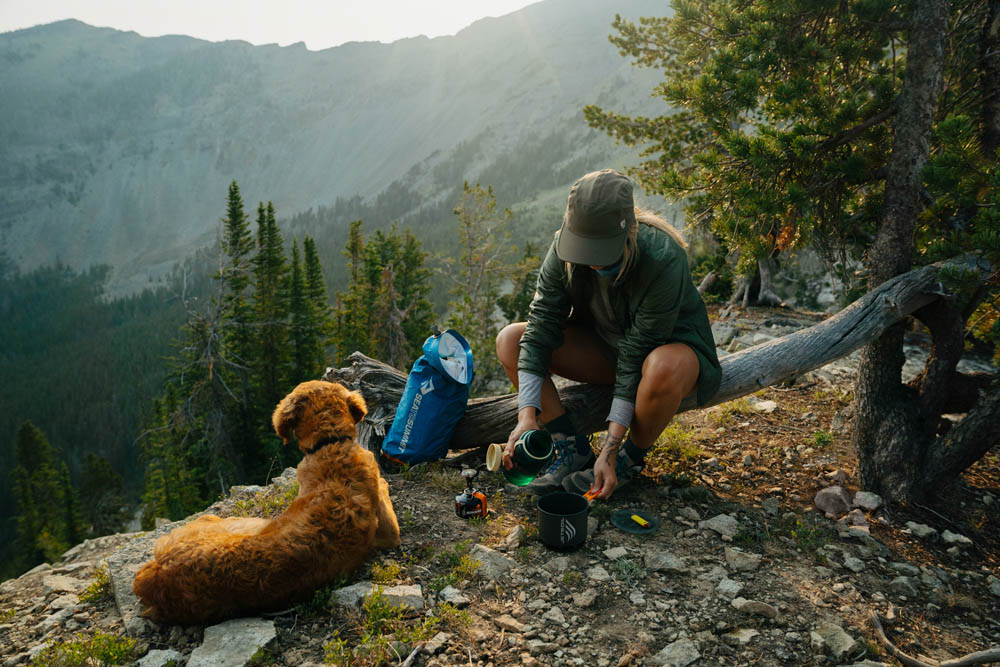10 Epic Backpacking Trips in the U.S.
There's no shortage of trails for backpackers looking to have an epic backpacking trip in America. The US is home to some of the most beautiful areas and natural wonders in the world. Protected national parks are a perfect spot to go backcountry camping or hiking.
Check out these 10 US national parks and start planning your next trip.
Olympic National Park Backpacking Trips
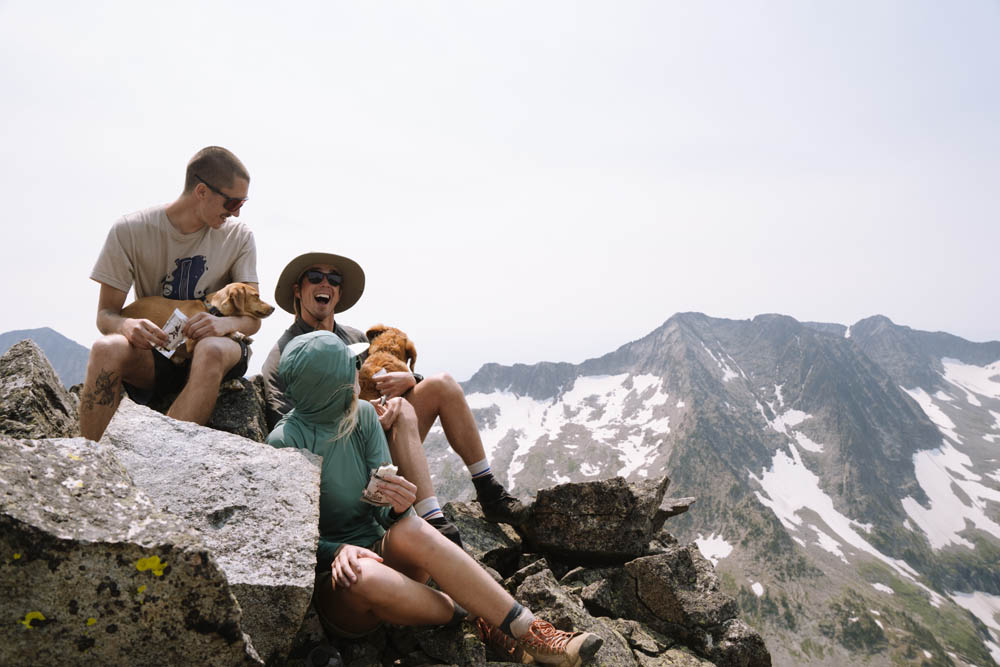
The Olympic National Park located in Western Washington is one of the US's most-visited National Parks. There are over 600 miles of trails available and the park is nearly 1 million acres.
Backpackers here experience a variety of wilderness areas from glacial peaks to rocky coastlines. Olympic National Park is home to the only American rainforests and backpackers all over the world consider a visit to this area to be a life-changing experience.
- Route Type - Route types are varied and split into four sections: North Coast Trails, South Coast Trails, Northside Trails, and Southside trails. These various routes feature temperate rainforest trails, coastal, mountain, and lowland forest routes
- Location - Washington's Olympic Peninsula in the Pacific Northwest.
- Difficulty - Varies from easy to advanced.
- Length Miles - The park has over 600 miles of available backpacking trails. There are a total of 99 hard trails in Olympic National Park ranging from 1.5 to 98.9 miles in length.
- Estimated Time - Varies depending on trail or route taken
- Elevation Change - Varies depending on trail or route taken or if summiting.
- Permit Information - Wilderness camping permits are required for all overnight stays and must be obtained in advance and reserved through Recreation.gov. Reservations may be made up to six months in advance. Permits are $8 per night for adults 16 and older and free for those under 15.
Find more information at Olympic National Park's official website.
Backpacking Glacier National Park
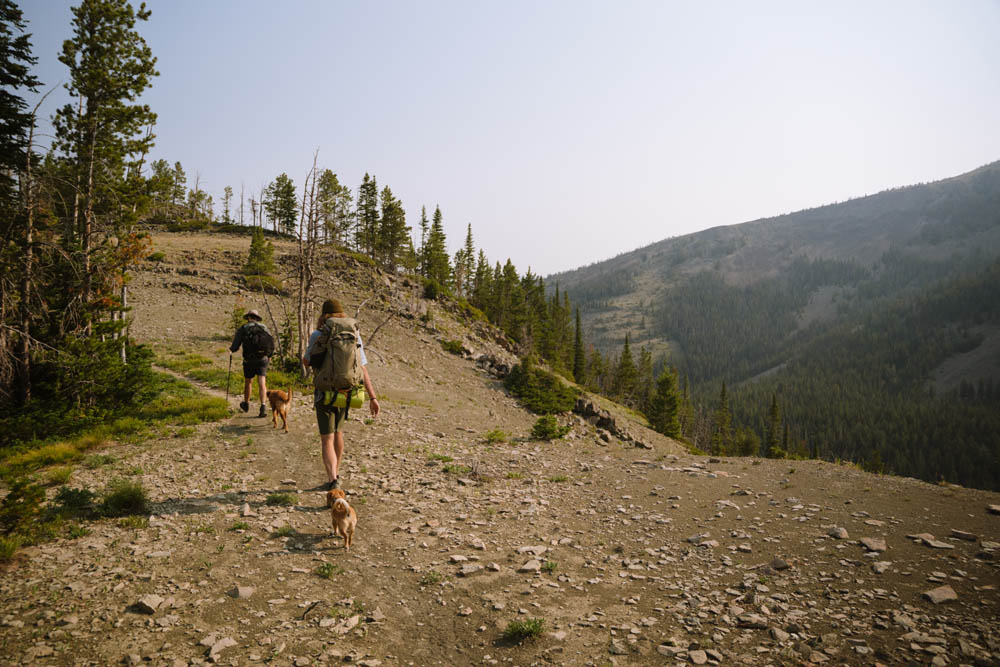
Glacier National Park has over 700 miles of backcountry trails for its visitors to explore.
The beauty of the park comes from its glacier-carved peak, lush meadows, deep valleys, and deep blue lakes. A major selling point of the park is the extraordinary wildlife that lives within it.
People from all over come to Glacier National Park to see black and grizzly bears, mountain lions, moose, elk, mountain goats, bighorn sheep, and more. Chances are that backpackers will encounter some remarkable animal sightings.
- Route Type - The routes in Glacier National Park are backcountry trails.
- Location - The Rocky Mountains in Montana.
- Difficulty - Varies from easy to advanced.
- Length Miles - The park has more than 700 miles of backcountry trails.
- Estimated Time - Varies depending on trail or route taken.
- Elevation Change - Varies depending on trail or route taken or if summiting
- Permit Information - There are some trails that require reservations in advance. Most campgrounds are first-come first-served. Reservations for sites that require it must be done three days in advance. Backcountry permits may be obtained up to seven days in advance. Advance reservations are processed using a lottery system. More information about Glacier National Park's permit information can be found here.
Find more information at Glacier National Park's official website.
Sequoia National Park Backpacking Trips

Backpackers visiting Sequoia National Park are drawn to the famous old-growth forests that make up the area. It's home to the world's largest tree by volume, General Sherman. These trees are only found in the western Sierras-drawing in people from all over to see these gorgeous, towering trees in person.
There are portions of the Sierra Nevada Mountain Range that go through the park, including Mt. Whitney, the highest peak in the continental US.
- Route Type - Forests and mountains make up the nature trails and routes in the park.
- Location - Just under a 5 hour drive north of Los Angeles in California.
- Difficulty - Varies from easy to advanced.
- Length Miles - 800 miles of maintained trails throughout 800,000 acres.
- Estimated Time - Varies depending on trail or route taken.
- Elevation Change - Varies depending on trail or route taken or if summiting.
- Permit Information - Wilderness permits should be bought in advance at Recreation.gov throughout the quota season (Memorial Day through Mid September). During this time period, the number of backpackers starting their trip is limited by an entry point and requires a $15 permit plus $5 per additional person in your group. In the off-season, wilderness permits are free and self-issued. They are not limited to daily quotas. More information about park fees can be found here.
Find more information at Sequoia National Park's official website.
Backpacking the Appalachian Trail
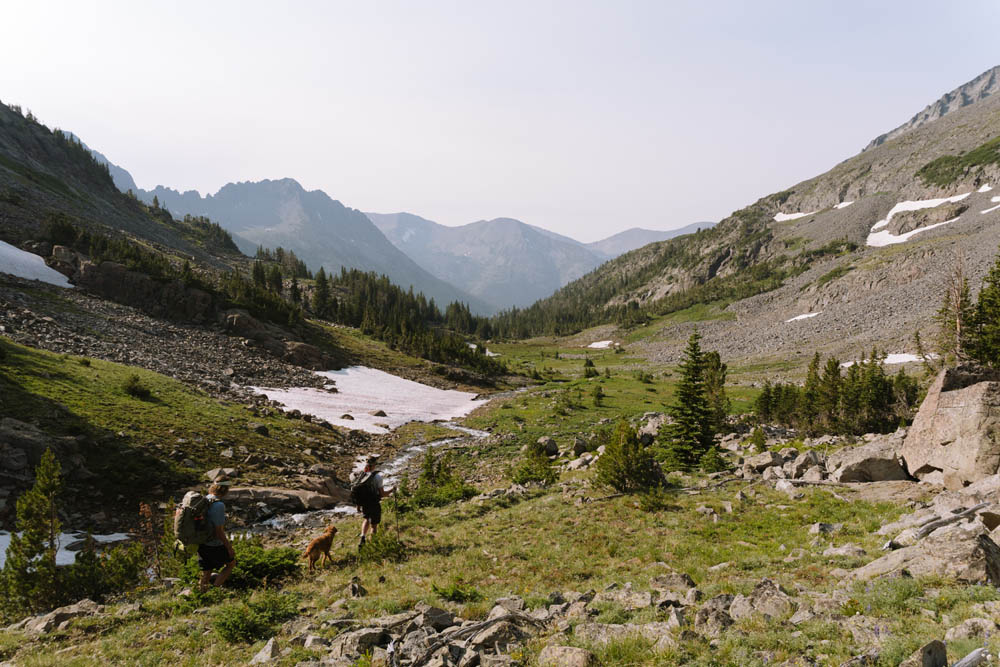
Trekking through the Appalachian Trail is not an easy feat, but it is definitely a rewarding one.
The entire trail is over 2,190 miles and thousands of hikers attempt a thru-hike every year. This is the adventure of a lifetime for many backpackers and the trip needs to be planned in advance if they are planning on going the full-length of the trail.
If you decide to take the plunge, you'll usually sleep in one of the 260 shelters, but tents are necessary because shelters fill up quickly. The Appalachian Trail is usually only a few miles from civilization and backpackers can pop into nearby towns to refuel on supplies.
- Route Type - This trail is a hiking-only footpath. Trails are well marked but visitors should always follow a map.
- Location - The trail spans 14 states across the Appalachian Mountains, including all of the 13 original colonies plus West Virginia.
- Difficulty - Varies depending on what part of the trail you are on. The most difficult aspect is the overall length and mental fortitude it takes to finish.
- Length Miles - The Appalachian Trail is over 2,190 miles long.
- Estimated Time - Five to seven months for thru-hike, with most coming short of just six months.
- Elevation Change - The elevation change is over 2,000 miles and the AT incurs a total elevation gain/loss of roughly 515,000 feet.
- Permit Information - Permits are required for specific trail visitors in three areas of the AT.: Great Smoky Mountains National Park, Shenandoah National Park, Baxter State Park. The vast majority of remote trailhead areas require no parking or entrance fees. Overnight sites in New England generally require fees. More information about permits and regulations can be found here.
Find more information at the Appalachian Trail's official website.
Yellowstone Backpacking Trips

Yellowstone National Park is on most backpacker's bucket lists. It's America's first national park, designated in 1872 by President Grant.
Travelers are attracted to the geothermal features within the park. It's a major reason to make the trip, as visitors will see geysers, hot springs, and fumaroles.
In addition to the unique geothermal features, the wildlife in the area brings backpackers and car campers alike to the area.
It's not uncommon to find wolves, deer, elk, moose, and bison among the diverse wildlife that lives in the park. The park is 3,740 square miles and over 2 million acres and impeccably preserved for backpackers-and the local flora and fauna-to enjoy.
- Route Type - Routes through Yellowstone consist of canyon, lake, hot springs, and forest trails.
- Location - The park stretches across Wyoming, Montana, and Idaho.
- Difficulty - Varies from easy to advanced
- Length Miles - There are more than 900 miles of hiking trails to backpack through.
- Estimated Time - Varies depending on trail or route taken.
- Elevation Change - Many trails in Yellowstone are more than 7,000 feet above sea level.
- Permit Information - Permits are required for overnight stays, available no more than three days prior to your trip. Seven-day passes are available for individuals by foot, bicycle, etc. for $20 per person. More information about permits and fees can be found here.
Find more information at the Yellowstone National Park's official website.
Backpacking Arches National Park

Arches National Park in eastern Utah is a popular spot for visitors, with over 1.6 million people visiting the park every year, though backpacking through the park is less common.
Around 16,000 people, or 1 percent of annual visitors, take the time to backpack through the backcountry. The landscape and environment in the park is harsh. There is limited water available, extreme desert summer temperatures, and few established trails.
This makes for a difficult trek made for experienced hikers. Backpackers who decide to venture into the park get the chance to see bright red sandstone arches, caves, and tunnels.
It's one of the most unique backpacking trips in the US, with over 2000 natural sandstone arches, petroglyphs, and Native American artifacts.
- Route Type - The routes run throughout the Southeastern Utah desert..
- Location - Arches National Park is located in the Southwestern Utah town called Moab.
- Difficulty - Varies from easy to advanced
- Length Miles - The length varies depending on route, from 50 yards to 7.8 miles.
- Estimated Time - Varies from 5 minutes to 4 hours. A complete list of trails can be found here.
- Elevation Change - The highest elevation in the park is 5,653 feet (1,723 m) at Elephant Butte, and the lowest elevation is 4,085 feet (1,245 m) at the Visitor Center.
- Permit Information - Backpacking permits are issued in person at the Backcountry Permit Office up to seven days before the day of the trip. More information about permits and fees can be found here.
Find more information at the Arches National Park's official website.
Backpacking the Smoky Mountains
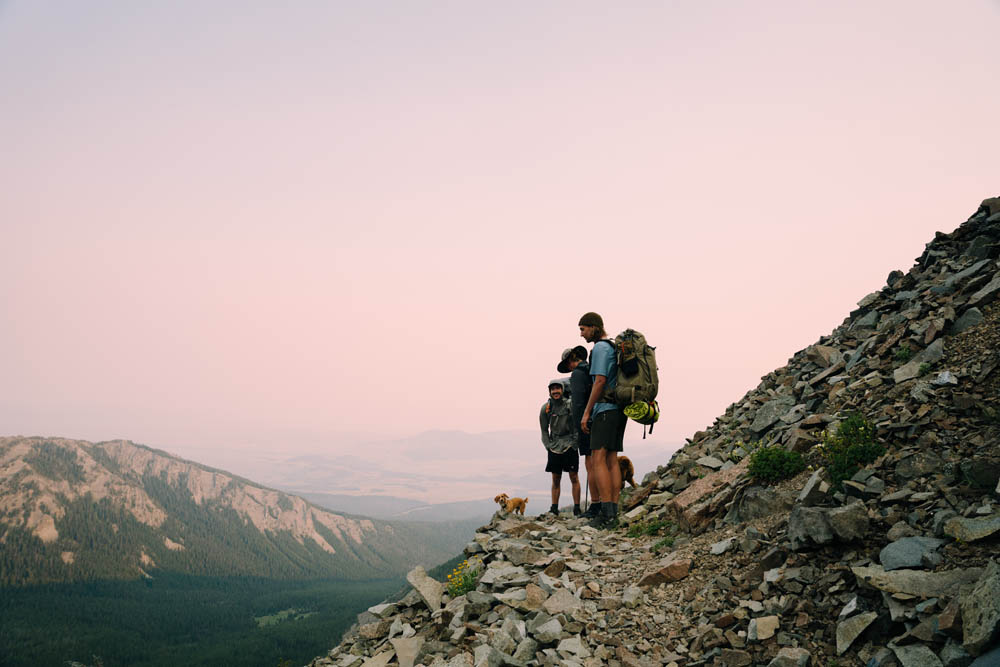
Backpacking in the Great Smoky Mountains National Park is a must for any camper wanting to get closer to the American South.
Located on the border of Tennessee and North Carolina, it's America's most visited national park.
Backpackers will experience expansive mountain vistas, old-growth forests, and rushing streams and waterfalls. The trails offer a look into the diverse wildlife in the area, including the famous black bear and hikes ranging in difficulty from easy for a family hike or advanced for experienced backpackers.
- Route Type - The routes run through forests, mountains, valleys, and rivers.
- Location - Great Smoky Mountains National Park is located on the border of Tennessee and North Carolina.
- Difficulty - Varies from easy to advanced.
- Length Miles - There are approximately 800 miles of meandering trails, ranging from 0.8 to 32.7 miles each.
- Estimated Time - Varies depending on the trails or routes taken.
- Elevation Change - Elevation changes range from 1,105 to 6,646 feet above sea level.
- Permit Information - There is no entrance fee, making it one of the few national parks that don't charge. However, reservations and permits are required for all overnight backcountry stays. You can find more information about permits here.
Find more information at the Great Smoky Mountains National Park's official website.
Grand Canyon Backpacking Trips

Any outdoor enthusiast who is up for the challenge needs to take a backpacking trip to the Grand Canyon National Park.
The canyon is one mile deep and up to 18 miles wide. Most visitors see the Grand Canyon from the South Rim, which is open all year and full of overlooks that are accessible by shuttle buses or cars.
Backcountry camping here is different from other hiking experiences and it's essential for hikers to be prepared. Adequate water and food is essential, particularly in the summer.
Day and overnight backpackers need to be prepared for lack of water and extreme temperatures-hot and cold. Even hikers in excellent shape have a hard time getting through a trail.
This trip is made for those who want to test their mental and physical endurance.
- Route Type - The routes through the Grand Canyon are backcountry trails.
- Location - The Grand Canyon in Northwestern Arizona.
- Difficulty - Advanced.
- Length Miles - The backcountry trails vary from 1.7 miles to 14.2 miles in length.
- Estimated Time - Varies based on the routes or trails taken.
- Elevation Change - Grand Canyon National Park has up to 4800 feet of elevation change.
- Permit Information - Permits are required for certain overnight campsites, but not required for day hikes and some campgrounds, though they must be reserved in advance. More information about permits and fees can be found here.
Find more information at the Grand Canyon National Park's official website.
Yosemite Backpacking Trips
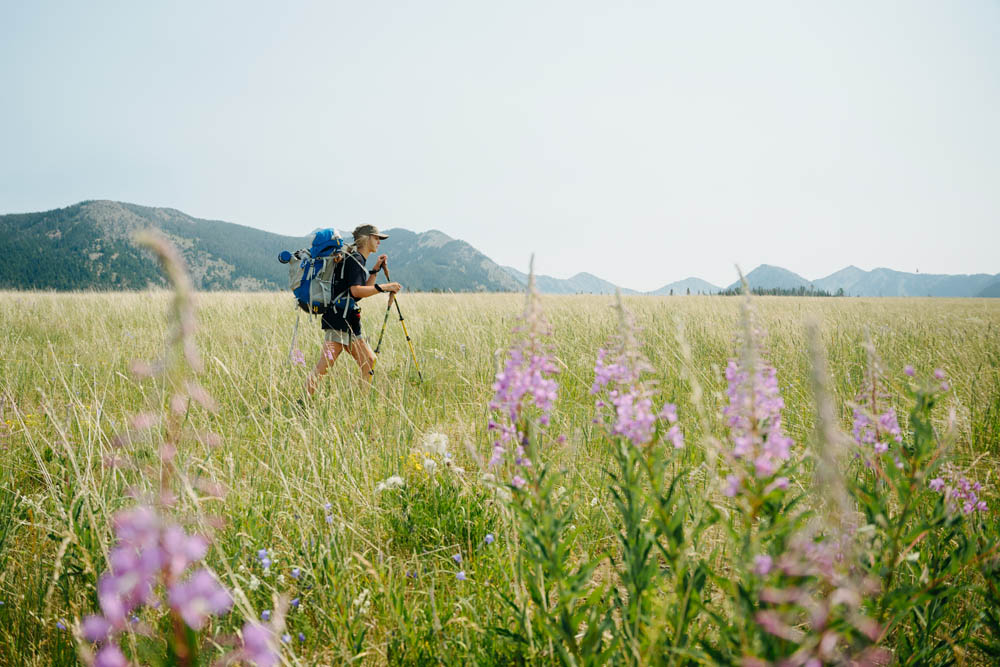
Yosemite National Park is home to some of the most impressive scenery in the US.
Backpacking trips allow visitors to head into the backcountry and become immersed in the vast wilderness and fresh mountain air. There are over 700,000 acres of wilderness giving hikers endless opportunities to find something new.
Backcountry campers come from all over the world to see the granite peaks, roaring waterfalls, and azure alpine lakes.
- Route Type - The routes vary depending on where you are in the park, but backpackers will experience mountain, valley, and forest trails.
- Location - The park is located in California's Sierra Nevada mountains.
- Difficulty - Varies from easy to difficult.
- Length Miles - There are over 750 miles of trails in Yosemite.
- Estimated Time - Varies depending on route or trails taken.
- Elevation Change - Depending on your route, there is up to 4800 ft gain in elevation.
- Permit Information - Wilderness permits are required year-round for backpacking and overnight camping. Reservations are recommended and permit fees run $5 per reservation plus $5 per person. More information about permits and fees can be found here.
Find more information at the Yosemite National Park's official website.
Pacific Crest Trail Backpacking Trips
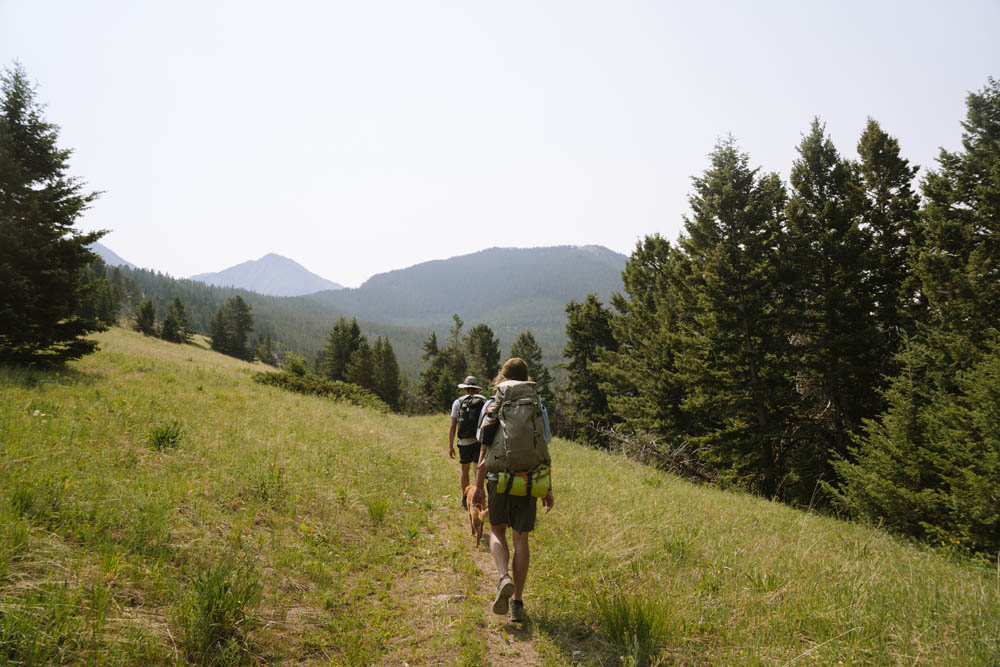
The Pacific Crest Trail is America's second longest trail, stretching from Mexico to Washington. The trail is divided into 30 sections and each section averages around 91 miles. The trail gets rerouted every year in order to preserve the local environment and provide better treadway for backpackers, in addition to necessary moves due to wildfires or other severe weather threats.
For best weather, it's recommended for northbound backpackers to start in mid-April and those going southbound to start in late June. This is due to potential snow, wildfire threats, and other natural occurrences that can either be dangerous or add significant time to the trip.
- Route Type - The Pacific Crest Trail route is a hiking and equestrian trail.
- Location - The PCT spans from Mexico to Canada through California, Oregon, and Washington.
- Difficulty - Difficult due to length and weather conditions.
- Length Miles - The trail is 2,653 miles in length.
- Estimated Time - On average, it takes backpackers approximately five months to complete the entire trail.
- Elevation Change - In total, the elevation change is approximately 420,880 ft
- Permit Information - Permits are required in some, but not all areas of the trail. There are different permits depending on how many miles a hiker is planning on completing. In depth permit information can be found here.
Find more information at the Pacific Crest Trail's official website.
Before starting your backpacking trip make sure you're prepared

The US has no shortage of national parks that offer thousands of trails for all kinds of backpacking trips. There are many considerations that you'll have to think about before you start on your adventure. Make sure you're adequately prepared with nutrient-dense foods and with a handful of backpacking recipes. The lightweight Jetboil Stash Cooking System fits easily in your pack and is ideal for making nutritious meals on the go. Check out our Ultimate Backpacking Checklist as a camping gear guide for necessities and extras. You'll want to know:
- How long the trail is
- What the weather is like
- The difficulty of the trail
- What kind of gear to bring
- Potential dangers and how to avoid them
- Peak times to go
Use this guide as a starting point when you're planning your trip to one of the 10 beautiful national parks. Make sure you're adequately prepared for whatever the trail throws at you and mitigate risk by doing as much research as you can. Happy camping!
